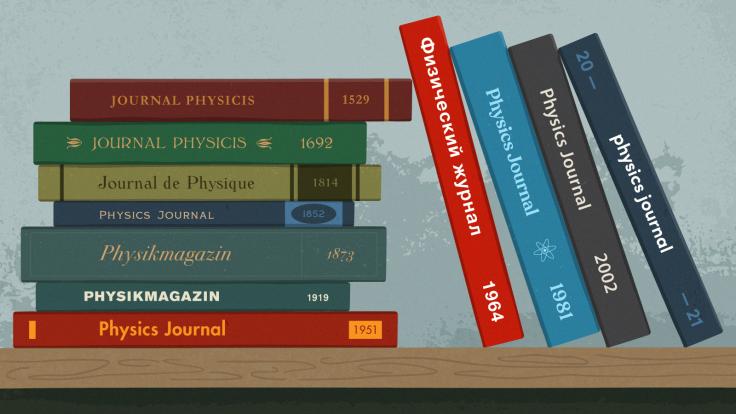Planning to start up a particle physics lab? Better hire an artist.
That was Robert R. Wilson’s thought in the 1960s, when he began forming what would become the Department of Energy’s Fermi National Accelerator Laboratory. He wanted a space to do physics that would inspire all who set foot on the lab. He knew, even then, the importance of mingling art and science. The 11th person hired was artist Angela Lahs Gonzales, and in her three decades at the lab, she influenced the character and aesthetic of nearly every part of the site.
Gonzales, the daughter of two artists who fled with her from Nazi Germany, had worked with Wilson previously at Cornell University. At Fermilab, she found herself responsible for a multitude of artistic choices. Working closely with Wilson, she created the lab’s logo, a union of dipole and quadrupole magnets used in accelerators to guide and focus the particle beam. She chose a bold color scheme, with vibrant blues, oranges and reds that would coat Fermilab buildings. She designed covers for scientific publications and posters for lab events and lectures.
“There was no project too small or large for Angela,” says Georgia Schwender, the curator of Fermilab’s art gallery. “She seemed to put just as much care and thought into sketches for the Annual Report as she did for a community Easter egg hunt. The whole lab was her canvas and her muse.”
A mix of themes and styles, from history to mythology and op-art to realism, are wrapped around images of accelerators, experiments and the Fermilab site. The images are often bizarre and fantastical, nearly always impressive. In one drawing, Fermilab’s bison dine at an elegant table; in another, winged creatures stare into a bubbling cauldron that contains the Fermilab accelerator complex and main building, Wilson Hall.
Gonzales typically worked in pen, sketching intricate details across paper, but she also branched out into different media, crafting jewelry, flags, vases, tables and even the elevator ceiling tiles. Her reach extended to typography, designs around doorways and drawings of things you might not expect: mundane things like emergency preparedness kits and literal nuts and bolts.
Her word on artistic choices was final. Employees were known to get a talking to if they painted something without consulting Angela. Some colors became tied to the science at hand. One time, an accelerator magnet was painted the wrong shade of blue and thus installed incorrectly, causing some confusion in the control room.
“Gonzales was at the lab from 1967 to 1998, and in that time she was incredibly influential on the style of the lab,” says Valerie Higgins, Fermilab’s archivist. “But you can see how these tendrils of art spiral out to influence the science and the shape of the lab as well.”
More than 100 pieces by Gonzales were featured in a Fermilab art gallery exhibit earlier this year, as the lab celebrated its 50th anniversary. “A Lasting Mark” ran from June to September before briefly traveling and then being retired. An online catalog of the exhibit is available on the Fermilab site.




























